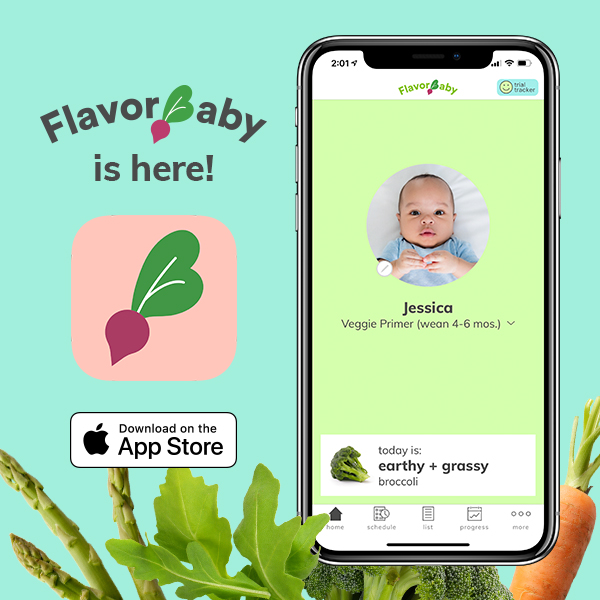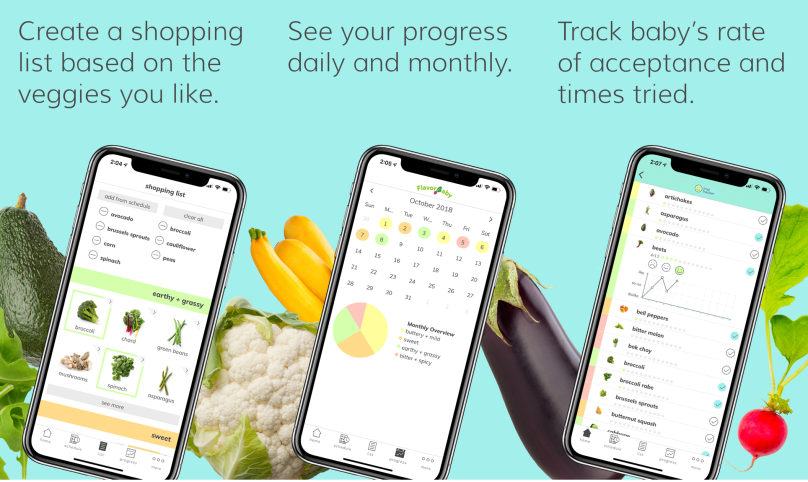
September is Childhood Obesity Awareness Month, an important time to reflect on the reality that nearly 1 of every 5 children in the United States is obese. While there is no single or simple solution, below are six important facts all expectant mothers should know:
-
Obese children are at least twice as likely to become obese adults.
-
-
-
All children are born with certain ingrained flavor instincts such as a love for sweets and an aversion to bitter foods (e.g. green vegetables).
-
Your child’s flavor preferences can be shaped through flavor learning especially during their first 1000 “taste days” (beginning in utero and continuing through breastfeeding, weaning and early adult-food feeding).
-
While it’s true that the children of overweight parents are 60% more likely to become overweight or obese by age five and overweight children are 80% more likely to become overweight or obese adults, strategies for preventing children from becoming overweight or obese do work and they begin with flavor learning.
Flavor learning is the natural mammalian process of forming our “likes” and “dislikes” for foods. Scientists believe flavor learning evolved to help us learn at a very early age, which foods provide energy and which are safe or unsafe to eat.
The effects of early flavor learning last until later in life and its effectiveness has been proven by numerous scientific studies. Flavor learning’s potential as an early learning tool for parents – just as music and reading to children are used to promote early cognitive function and development – is significant and merits serious consideration especially for expectant mothers.
The process starts early, even before kids are born, and requires paying particular attention to the flavors your baby experiences in her first 1000 “taste days.” During this fast-growing period of life, new foods and flavors are more easily accepted than later in adulthood when it can be very difficult to change food preferences.
As summed up from Flavor Learning in Utero and Infancy, an interview with Dr. Julie Mennella, a biopsychologist specializing in the development of food and flavor preferences in humans: Early exposure to a wide variety of flavors that signal healthy foods can help to shape your baby’s food preferences later in life.
What does this mean for pregnant mothers exactly? It means you can help shape your baby’s taste preferences so he likes (or is more accepting of) healthy foods later in life.
As a pregnant mother, below are some things you may want to consider as your baby moves through her first 1000 “taste days”:

Prenatal Flavor Learning
At four months gestation, a fetus’s ability to taste is fully formed. This means that anything that mommy eats baby can taste. The flavors of the mother’s diet appear in the amniotic fluid and are “imprinted” on the child’s mind forming the earliest stages of flavor learning.
To take advantage of prenatal flavor learning, focus especially on the final 4 to 9 months of gestation. During that time mothers should eat a varied diet that includes two servings of fruit and three servings of vegetables each and every day. Pay special attention to vegetables, keeping at least one bitter green (i.e. green beans, broccoli, Brussels sprout, spinach) in regular rotation as a daily serving.

Nursing Infant Flavor Learning – “The Flavor Bridge”
During breastfeeding this cycle of flavor learning continues and becomes stronger as a baby now has the ability to smell (flavor is defined as the combination of taste and smell) as well. Some researchers have taken to calling breastfeeding the “flavor bridge,” extending the flavor experiences from learning in the womb to flavor learning during the weaning process to adult foods.
Breastfeeding mothers should continue eating two servings of fruit and three servings of vegetables (including at least one bitter green, such as green beans, broccoli, Brussels sprout, and spinach) each and every day. While flavor intensity can vary with time, one study showed that the flavors of the mother’s diet peaked in breast milk 1.5 hours to 3 hours after ingestion, suggesting this as an optimal window for flavor learning.

Formula-fed Infant Flavor Learning
Due to the singular flavor experience afforded by infant formulas, baby’s who are formula-fed exclusively are missing out during this important “flavor bridge” period. And, while the American Association of Pediatricians (AAP) recommends only breast milk or formula for baby’s first six months there is an old French custom, which you may want to consider if you are feeding your baby formula exclusively. Moms in France have taken to adding a tiny bit of puree or a little water from cooking vegetables (think bouillon without added salt) to baby formula to gradually introduce their little ones to vegetable flavors prior to starting purees during weaning. This can take place in very small amounts in baby’s bottle or with a spoon. As adults, a vegetable flavored formula may not sound appealing, but multiple studies show that specific flavors carried through in mother’s milk are later preferred by weaning babies.
In giving this a try, vegetables you may want to include are carrots, green beans, spinach, broccoli, zucchini (peeled and seeds removed), leeks (whites only), and pumpkin. Baby endive, baby chard, and green peas can be used in limited quantities, but only if served ground extra fine due their fiber content.

Weaning Infant Flavor Learning
By tradition in the U.S., single-grain, bland tasting cereals are generally baby’s first food. This too is a lost opportunity for flavor learning. In a study led by Dr. Marion Hetherington at the University of Leeds it was concluded that…
“…early exposure to a rotation of vegetable flavors first added to milk, then to cereal, increased intake and liking of these vegetables during complimentary feeding.”
In the study, babies were given milk mixed with 40% vegetable puree once daily for 12 days and baby rice mixed with 70% vegetable puree once daily for the next 12 days, while breast or formula feeding proceeded as usual. Researchers found that these babies ate more vegetables, ate them at a faster rate, and enjoyed them more than those in the control group.
In addition to breastfeeding or formula feeding as usual, during the weaning to solid food process you may want to try adding a little vegetable puree first to breast milk or formula for 2 to 3 weeks (40% puree to 60% milk) then to a cereal and breast milk or formula mixture (70% puree to 30% cereal mixture) for 2 to 3 few weeks. The vegetables you may want to try in the rotation are carrots, green beans, spinach, and broccoli.
For more than three years I have spent time researching the subject of flavor learning and uncovered more than 100 scientific articles and studies that confirm different aspects of its viability. Yet the idea of flavor learning appears only in a smattering of news articles and the problem of childhood obesity in the U.S. has doubled in children and quadrupled in adolescents in the past 30 years. It’s clear that the strategies we are currently putting forth are not enough. In my opinion, flavor learning is a simple and natural way to raise the “flavor intelligence” of our children, expanding their palates and increasing their preference for healthy foods as children, adolescents and throughout their adult life.
If you liked this article, it would mean a lot to me if you shared it on Facebook, LinkedIn or Twitter. Want more like this? Follow me on Medium or Twitter.
You may re-post this article on your blog, website, etc. as long as you include the following (including the links): “This article originally appeared on www.flavorlearning.com. Follow @macmclaurin for more articles like this.”
Lastly, I know some of the advice provided here runs counter to common American societal thinking. My recommendation is to do your own research. Read my blog: The Flavor Learning Project. Google flavor learning and read the articles and research as I have done. Talk to your healthcare professional about flavor learning and what makes sense for you and your baby. While I truly believe flavor learning can help to lessen our childhood obesity problem and ensure that future generations eat healthier, this column should not be considered medical advice.














 There is a sensitive period of time when an infant’s brain is most receptive to forming a preference for bitter flavors like green vegetables. Multiple studies have shown that from birth to 4 months old, babies are more open to trying and learning about different flavors, and, just as importantly, that this “
There is a sensitive period of time when an infant’s brain is most receptive to forming a preference for bitter flavors like green vegetables. Multiple studies have shown that from birth to 4 months old, babies are more open to trying and learning about different flavors, and, just as importantly, that this “
 The belief that our kids will die at a younger age than we will is not new. It has been trumpeted by Michelle Obama in recent years as a part of her
The belief that our kids will die at a younger age than we will is not new. It has been trumpeted by Michelle Obama in recent years as a part of her 


 Especially when you compare our numbers internationally. The United States has the highest number of
Especially when you compare our numbers internationally. The United States has the highest number of  In a
In a